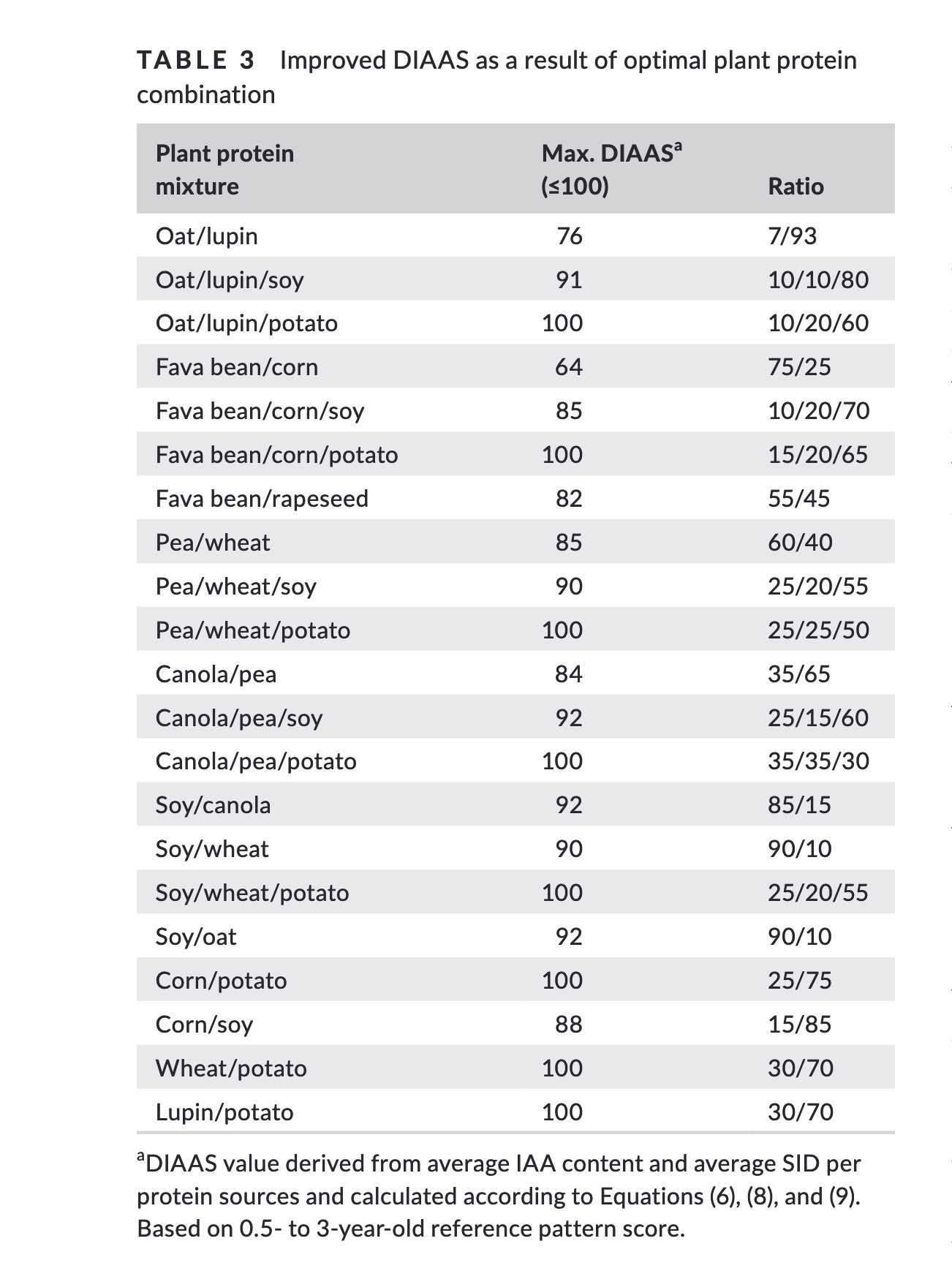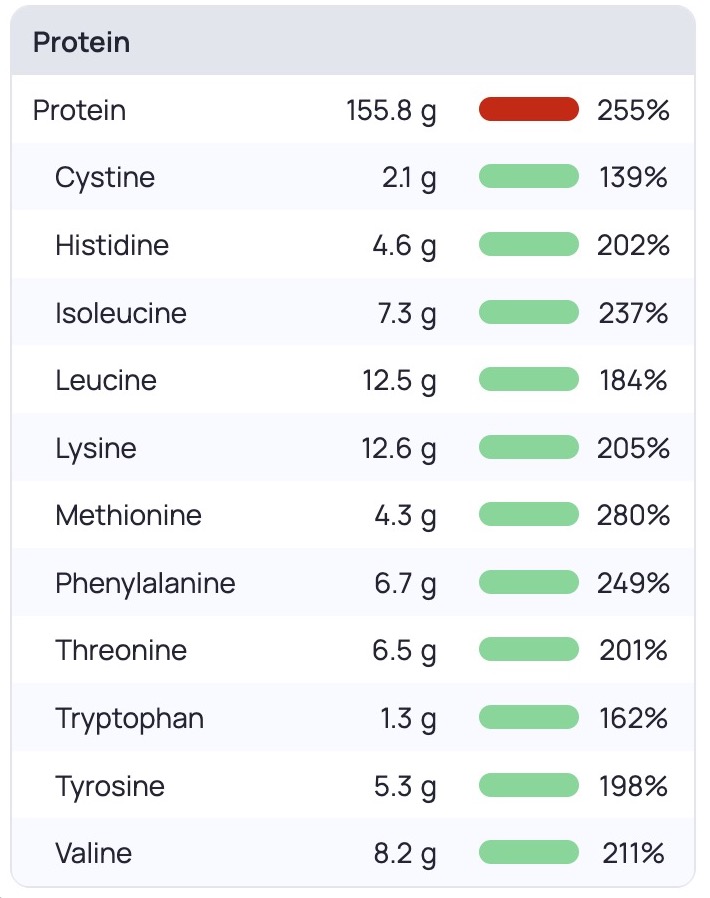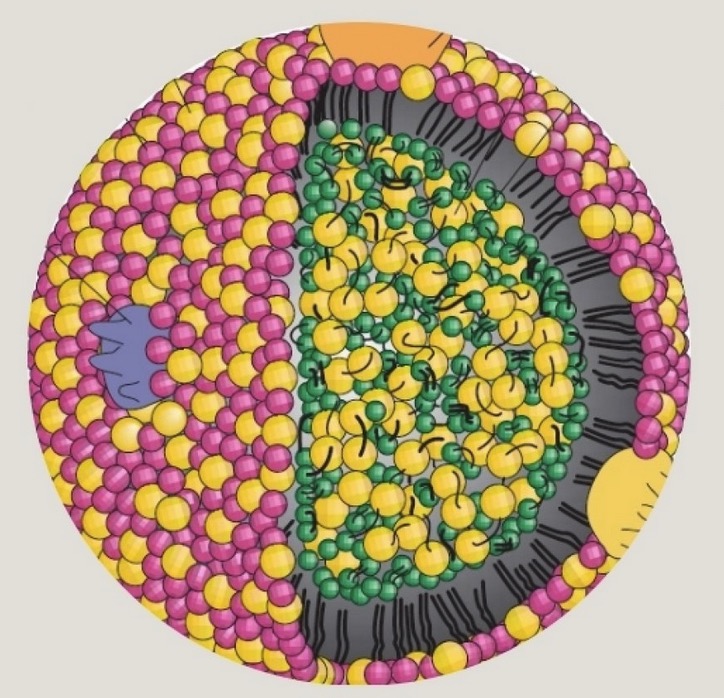Indispensable amino acid (IAA) composition and standardized ileal digestibility (SID) of five animal- and 12 plant-based proteins were used to calculate their respective Digestible Indispensable Amino Score (DIAAS) according to the three age categories defined by the Food and Agriculture Organization (FAO). Mean IAA content and mean SID obtained from each protein dataset were subsequently used to simulate optimal nutritional quality of protein mixtures. Datasets revealed considerable variation in DIAAS within the same protein source and among different protein sources. Among the selected protein sources, and based on the 0.5- to 3-year-old reference pattern, pork meat, casein, egg, and potato proteins are classified as excellent quality proteins with an average DIAAS above 100. Whey and soy proteins are classified as high-quality protein with an average DIAAS ≥75. Gelatin, rapeseed, lupin, canola, corn, hemp, fava bean, oat, pea, and rice proteins are classified in the no quality claim category (DIAAS <75). Potato, soy, and pea proteins can complement a broad range of plant proteins, leading to higher DIAAS when supplied in the form of protein mixtures and at specific ratios. Such complementarity highlights the potential to achieve an optimal nutritional efficiency with plant proteins alone.
Direct PDF here
My Notes Below
https://en.wikipedia.org/wiki/Digestible_Indispensable_Amino_Acid_Score
https://en.wikipedia.org/wiki/Liebig’s_law_of_the_minimum#Liebig’s_barrel
Dietary protein quality is primarily characterized by their indispensable amino acid (IAA) content. IAAs cannot be synthetized by the human body and must be obtained from the diet.
DIAAS addresses the limitations of the PDCAAS method by considering the ileal digestibility of individual amino acids (AAs), with the growing pig as preferred model over the rat, and by avoiding truncation of the score obtained.
The FAO DIAAS report also recommends classification of proteins using quality categories based on the DIAAS value: <75 (no quality claim); 75–99 (high-quality protein); and ≥100 (excellent quality protein).
To improve comparison between results, studies involving rodents, gilts, sows, piglets, weanling pigs, and finishing pigs were excluded and instead only data obtained with growing pigs were used.
The obtained datasets were subsequently used to simulate protein mixtures and highlight the complementarity of proteins at specific ratios to obtain higher values than that of the individual proteins.
SIMULATE MIXTURES
Given the varying protein content among protein sources, the absence of measurements of antinutritional factors (ANFs), and the limited description of the process used to obtain the various protein sources, a selection cannot be based on a specific determinant. For this reason, the average DIAAS value obtained from each protein dataset was selected.
A protein source reaching a DIAAS of 100 or above indicates that none of its amino acids is limiting and this sole protein source should be able to meet physiological requirements. Among the proteins selected in this study, potato protein, egg protein, casein, and pork meat reach this level…
The digestibility score of each indispensable amino acid highlights the potential of complementarity between protein sources
Table 3 - Simulated plant protein combinations

Besides digestibility, amino acid composition of cooked protein food can differ greatly from that of its raw state due to leaching of soluble protein fractions into the boiling liquid and through the formation of amino acid derivatives… This further illustrates the importance of considering processing and cooking conditions when determining DIAAS.
DIAAS of potato protein reaches the excellent protein quality range (DIAAS ≥100) as defined by FAO, similar to most animal-derived proteins. Soy and whey proteins obtain a DIAAS score above 75
Different plant proteins can have a huge impact on DIAAS score… i.e. don’t just pay attention to crude protein.
Digestible Indispensable Amino Score value is determined by the most limiting digested IAA of the protein
Nutritional efficiency lies in meeting physiological requirements with minimal intake of high-quality protein, as opposed to higher protein intake of low-quality protein. This last scenario is not necessarily favorable due to a potentially high satiety effect resulting in inadequate protein intake and suboptimal sustainability impact of such a diet
This is really important, the volume required to hit protein requirements is important to consider as well when evaluating protein sources. If the volume is too high it may be difficult to achieve the minimums.
A limitation of our study is the reliance on total digestible lysine, as this is most commonly reported in the literature.
Limitations:
This paper looks at mechanical effects to fit a score, and doesn’t measure outcomes in humans.
Confounders, protein absorption will also be impacted by other food consumed at the same time, which this study didn’t account for. Unless your eating exactly, and nothing else, the mixture of foods they studied (and are a biological pig) the results may not fit your lived reality.
The protein optimization at the end of the paper is just engineering to the DIAAS scores, and not measured in reality.
The paper authors have a clear bias in favor of plant based proteins given their introduction, its not a bad thing, I’m glad they made it clear.
Much appreciated! That’s an amazing breakdown
Its worth noting some food tracking apps, like cronometer, will give you the amino acid breakdowns of your logged food as well. That figure is not human absorbable DIAAS score, but just the raw amounts in the food itself, but still a interesting tool if your debugging a new diet protocol.



